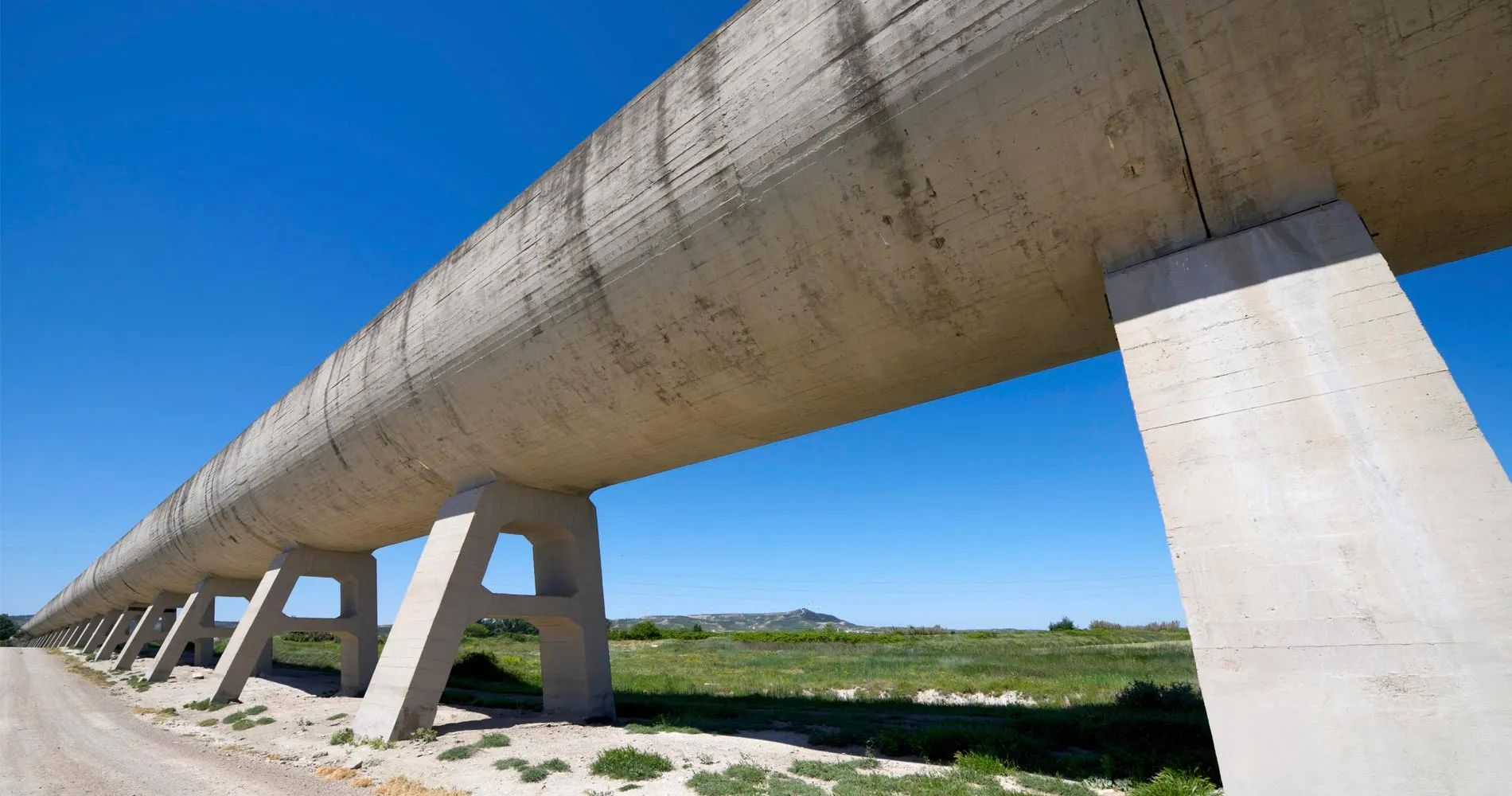The planet is running out of fresh, potable water for hundreds of millions of people. Countries are feeling political, economic and social pressures resulting from climate change, population growth, migration, increased poverty, armed conflict and the shaking up of food supply chains. Over the past few years, Spain has witnessed unprecedented floods, record temperatures and wildfires ripping through crops and forests. Spain’s agriculture and tourism industries, which require billions of litres of water a year, are under mortal threat.
Bruce McMichael
29 January 2024
Arabic version | French version | Spanish version
Southern Spain is one of the world’s top olive oil-producing regions. Primarily made from pressed Picual olive berries, the crop requires a steady water flow to thrive. However, rainfall around the city of Córdoba in 2023 was about 30% of the average recorded in the 1981 to 2010 period. Further west, around Jaén, the numbers are even more ominous at just 16%, according to NASA’s Earth Observatory research. Climate change and the planet’s warming are having real-world consequences on food production across Spain. Olive production has become precarious.
There is a popular saying in Spain, ‘En abril, aguas mil‘ – ‘April will bring the rains’. However, April 2023 posted the lowest rainfall on record across the country, with temperatures in Andalusia rising to record-breaking monthly levels in Seville (37.8°C) and Cordoba (38.7°C). At the time, the Spanish government approved a EUR 2.2billion plan to help farmers and consumers cope with an enduring drought that the April heat has exacerbated.
Across the country, September 2023 experienced 12% less rainfall than predicted, according to the Spanish Meteorological Agency (AEMET). This left the country facing three years of low precipitation. Malaga swimming pools are left empty on the tourist-heavy southern Costa del Sol, which runs east and west of the regional capital, and golf courses are parched.
The country is sometimes called Europe’s back garden, a fertile place that exports truckloads of agricultural produce. For example, the south-eastern provinces of Murcia, Almería and Alicante that make up Spain’s fruit and vegetable heartland — the so-called ‘Orchard of Europe’— produce around 70% of all vegetables and 25% of all fruit exports.
In Spain, the most significant user of water is the agricultural industry. Today, the Spanish farming sector accounts for as much as 80% of the country’s freshwater consumption.
“This (2023) drought shows us the limits of the Spanish agricultural model, which is based on the false impression that we have an abundance of water,” said Julio Barea, Greenpeace Spain’s water resources expert, according to contemporary news reports.
Academics, government and commercial water suppliers are now considering how to influence the agricultural sector, alongside domestic users, on rationing and minimizing water usage through schemes such as recycling wastewater.
“Spain registered the driest start to a year in the first four months of 2023 since records began in the 1960s, with Catalonia and southern Spain’s Andalusia being the most affect,” said Ruben del Campo, spokesperson for Spain’s meteorological agency AEMET, earlier this year. “Several heat waves recorded in Spain and across Europe in the summer of 2023 have worsened the drought, lowering reservoir levels as water evaporation and consumption increased.”
There is a creeping desertification in Spain. And in many ways Spain brought this on itself through the diversion of billions of liters of water from the Tagus River in the north to irrigate crops in the southeast of Spain.
In November 2023, Chatham House, the London-based international affairs think-tank, published a report titled ‘The emerging global crisis of land use. Rising competition for land threatens international and environmental stability, requiring that the associated risks be mitigated.
According to The European Union’s Joint Research Center, increased pumping for intensive agriculture irrigation, a demanding public water supply and tourism have put underground reservoirs under intense pressure. The Guadiana (Portugal and Spain) and Segura (Spain) rivers and Mediterranean islands such as the Balearics experience severe water stress conditions throughout the year.
While water shortages in Spain are acute, they are replicated worldwide, including North Africa, central Europe and sub-Saharan Africa. December 2023’s COP28 is pushing the water issue up the agenda with a focus on conserving and restoring freshwater ecosystems, enhancing urban water resilience and bolstering water-resilient food systems. Another focus should be controlling their population growth, which in some African countries reached nearly 3% in 2021. The host country, UAE, invited Tajikistan and the Netherlands to co-lead the Water Agenda at the meeting.
A statement from COP28 notes, “Billions of people worldwide are now facing severe droughts, floods and water contamination due to climate change, further undermining food security, community cohesion and economic development. These climate impacts worsen existing challenges around clean drinking water access and sanitation.” Spain has the same conditions.
In the southern Malaga province, Acosol reports the region may be facing a profound risk of water shortage by summer 2024, while in 2023 the region experienced its most prolonged drought in over 60 years. In a short-term measure to cut water usage by up to 20%, city officials in Malaga, the region’s major city, temporarily imposed various bans, including washing cars with drinking water and watering gardens during the peak summer months.
The hot weather and drought have caused heated debate in Madrid’s political corridors where, in May 2023, a EUR 2.2 billion drought response plan was approved to support farmers’ work while maintaining production and avoiding food shortages after the hottest-ever recorded April temperatures.
The money includes EUR 1.4 billion from the Ministry of Environment to tackle the drought and increase water availability and EUR 784 million from the Ministry of Agriculture to help farmers maintain production and avoid food shortages.
Longer-term solutions appear frustratingly out of reach. With Europe’s so-called Orchard under such intense weather pressure, solutions need to be found on the local, national and global levels.







